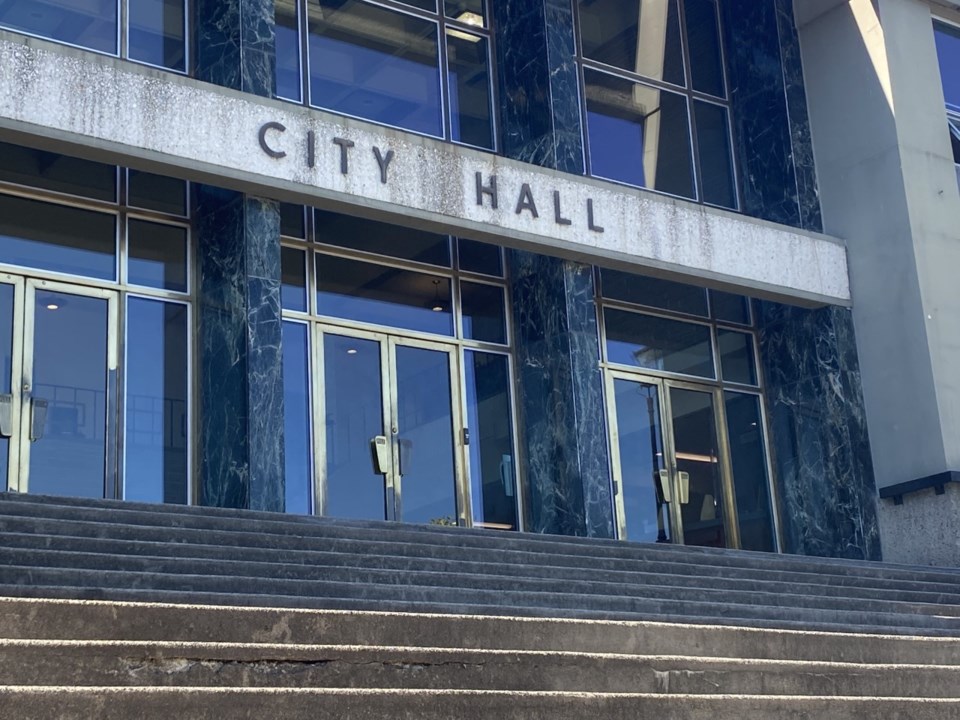New Westminster is divided on how often staff should report back to council on progress being made on achieving city council’s strategic priorities.
In May 2023, council adopted five strategic priorities during its 2022 to 2024 term: community belonging and connecting; homes and housing options; people-centred economy; safe movement of people; and asset management and infrastructure. The five strategic priorities are also informed and guided by four “lenses” (reconciliation, climate action and environment, public engagement, and DEIAR – diversity, equity, inclusion, and anti-racism) and three “foundations” (organizational effectiveness, resilience, and healthy governance).
Staff has been providing council with quarterly updates on the progress being made on council’s strategic priorities plan. In a Sept. 23 report to council, staff recommended the status reports be done semi-annually, rather than quarterly.
“Staff have found that reporting on a quarterly basis does not result in constructive reporting, as not enough has changed from one quarter to the next to make for meaningful updates,” said the report. “As a result, staff recommends that reporting be reduced to semi-annually, including an annual report near the anniversary of adoption of the strategic priorities plan.”
In a 5-2 voted, council supported staff’s recommendation. Councillors Daniel Fontaine and Paul Minhas voted in opposition.
Fontaine said he’d prefer getting an annual, not semi-annual, update on the progress being made on council’s strategic priorities.
“It will reduce some staff time and effort,” he said.
Mayor Patrick Johnstone and councillors Ruby Campbell, Tasha Henderson, Jaimie McEvoy and Nadine Nakagawa voted against Fontaine’s motion to move to annual reporting on the council’s strategic priorities.
“I really appreciate receiving these reports back,” Nakagawa said. “I know staff put a lot of work into it, but I think it is helpful for council to see what projects are moving along and which ones are perhaps in need of more focus or resources or advocacy at senior levels of government.”
Campbell believes a semi-annual update, as recommended by staff, will assist council in terms of planning its advocacy efforts and in determining how to support staff in terms of workload demands.
“I really appreciate the reports,” she said. “I do feel quarterly is a lot – we don't want staff to have to spend time telling us about what they're doing rather than actually doing it.”
Henderson said New Westminster has an “ambitious council” that brings forward lots of motions, so she’d prefer to see semi-annual reports to keep council apprised of the work that’s underway. She said semi-annual reports would also be more a streamlined approach than having council members reaching out to staff individually for updates on various initiatives in the strategic priorities plan.
“Well, if this passes, staff will definitely be working, because now they're going to be producing two reports instead of one,” Fontaine replied. “At some point we have to start deciding what's nice to have and what is a need to have.”
Fontaine argued that staff provide reports to council on various initiatives, so they’re not relying on the strategic priorities plan update to get information about various initiatives that are underway.
“We get report after report after report that comes to council outside of this report,” he said. “So, it's not like there's a shortage of reports. … My assumption would also be that if this is done annually, that that does not prevent staff from coming to council if there is an issue.”
After voting 5-2 against Fontaine’s motion to have staff report back annually, council voted 5-2 in support of the original staff motion recommending semi-annual status updates on the strategic priorities plan.
“I'm voting against this because I'm trying to save staff work, not create work for staff,” Fontaine said.
Workload challenges
Mayor Patrick Johnstone said he appreciates that the report allows council to track progress on implementation of strategic initiatives.
“We can always go back to the report we got six months ago and compare them,” he noted. “That makes it really easy to compare.”
Johnstone said items are marked as red in the report have a common theme: lack of resources. He said it would be worthwhile knowing what work isn’t being done because of capacity issues related to unfilled positions or because council has not approved resources needed to get that work done.
According to a staff report, the city has made “a significant amount of progress” on each of the priorities but has also encountered some “notable challenges” that have put achievement of council’s goals at risk.
“The most significant risks identified in the status reports relate to significant workload challenges, ongoing staff vacancies, labour shortages more generally – including for contractors and consultants – and with respect to the homes and housing options priority, the dynamic and demanding regulatory environment that has introduced a significant degree of additional work for planning and development department staff in particular,” said the report.





